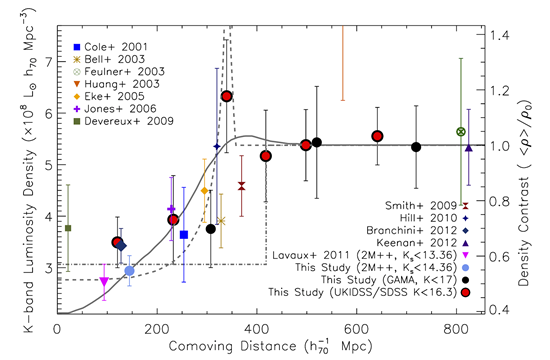|
圖片來源: Keenan et al. (2013), ApJ, 775, 62

Near-infrared K-band (2.2 micron) luminosity density as a function of comoving distance in the local universe. Data points show measurements from this study and others from the literature. The right hand vertical axis shows total matter density contrast assuming K-band luminosity density is an unbiased tracer of mass density. The curved lines show radial density profiles from two models that invoke a local under-density to fit the type Ia supernovae data without dark energy. The "step function" shows another model that uses a local under-density to reconcile the discrepancy between local measurements of the Hubble constant and those inferred by Planck.
|
 asiaa.sinica.edu.tw 媒體連絡: epo
asiaa.sinica.edu.tw 媒體連絡: epo asiaa.sinica.edu.tw
asiaa.sinica.edu.tw